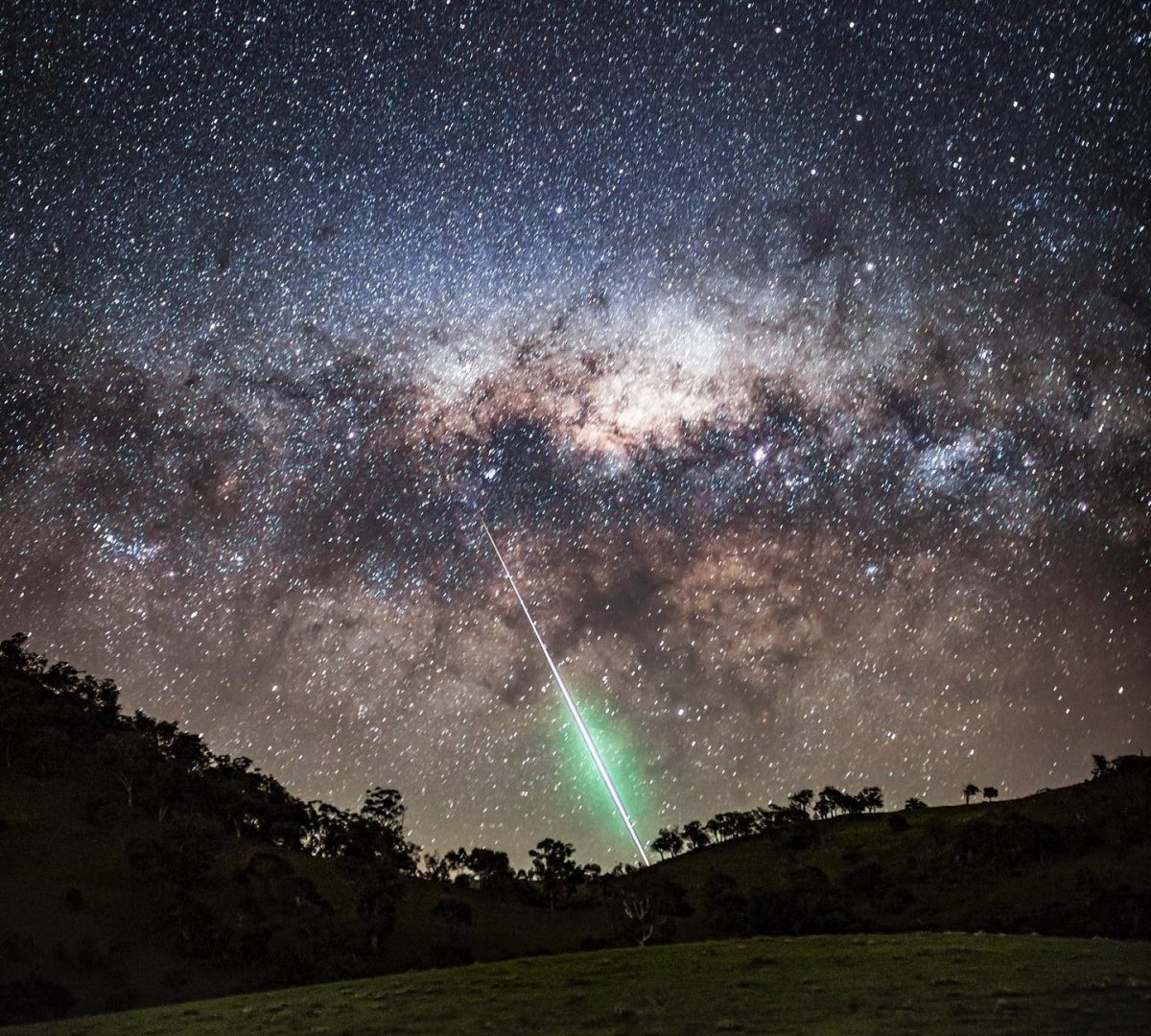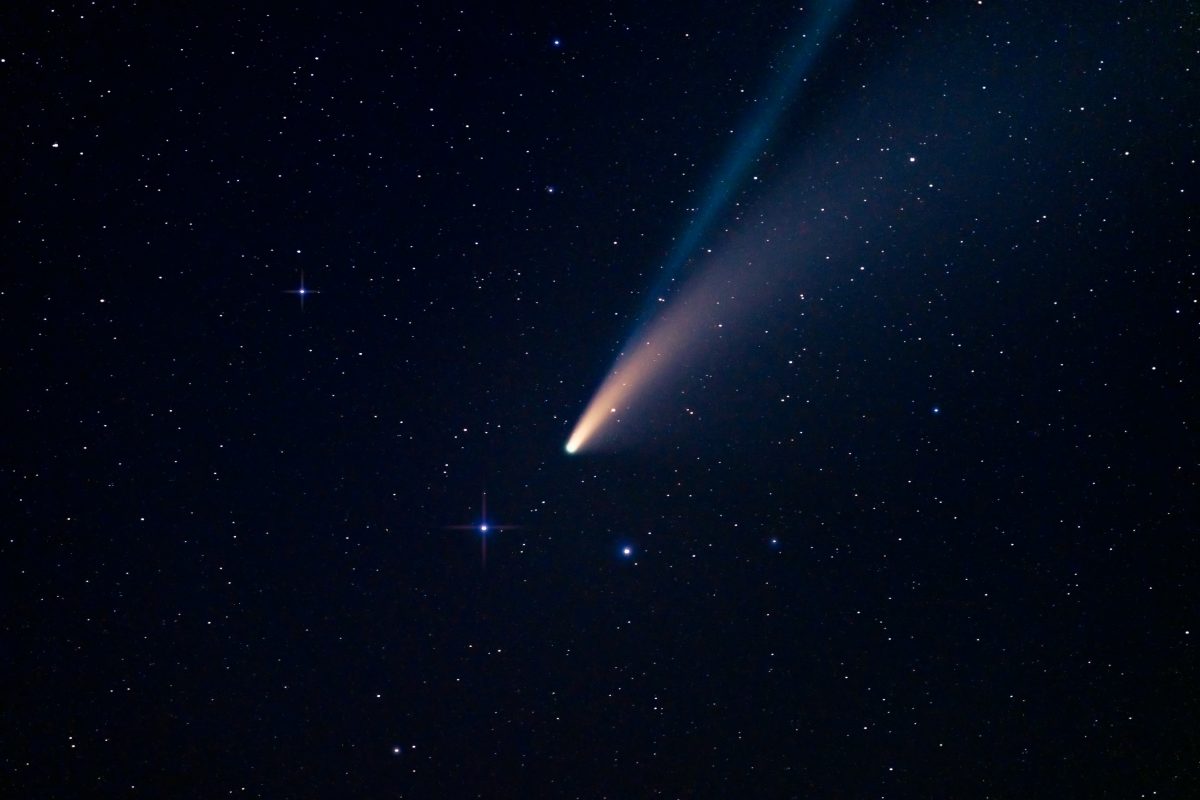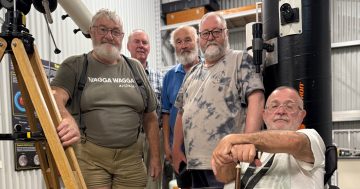
A shooting star, as seen from Canberra. Photo: Ari Rex.
You’ll have many chances to make a wish this week, but you will have to get up early.
Australians will be treated to a deluge of ‘shooting stars’ over the night sky this week as part of the annual ‘Eta Aquariids’ meteor shower.
The meteor shower is caused by the Earth running into a debris stream laid down by Halley’s Comet and usually occurs between 19 April and 28 May every year. For 2023, the activity will peak between Thursday, 4 May, and Sunday, 7 May.
You’ll also want to set your alarm clock – the best time to see it is between 3 am and 5 am.
For those watching from the ACT and south-east portion of NSW, there should be about 10 meteors per hour on Thursday morning, going up one to 11 on Friday, eight on Saturday and dropping to six on Sunday.
Meteors, or large space rocks, regularly enter Earth’s atmosphere, but almost all are burned up by the resistance – or drag – of the air. This hot glow is what we see as a ‘shooting star’.
A shower of meteors typically occurs when the Earth passes through the trail of dust and rocks left behind by a passing comet. As comets draw closer to the Sun, some of the icy surface boils away and strews debris in its wake.
Halley’s Comet circles the Sun every 76 years, and the Earth crosses its orbit twice a year in May and October. The latter is known as the Orionid meteor shower and peaks around 20 October.
The weather forecast for the rest of this week is mostly clear, with frosty mornings. So there shouldn’t be too many clouds in the way.

A trail of dust left behind by a comet. Photo: Justin Wolff.
The radiant, or point in the sky where the Eta Aquarids seem to emerge from, is in the direction of the constellation Aquarius. In fact, the shower derives its name from the brightest star of the constellation, Eta Aquarii. The gas giant Saturn will be nearby to help guide your eyes.
Two weeks ago, Australia also experienced its first total solar eclipse in years.
The Moon completely blocked out the Sun on 20 April over Exmouth in Western Australia. On our side of the country, the most Canberra saw was a partial eclipse, and that was only by using special glasses or projecting the Sun through a telescope onto a piece of cardboard.
But between 1:15 am and 5:30 am on 6 May, you might notice the Moon change shape as the Earth’s shadow passes over it to create a partial lunar eclipse.
Unlike a total eclipse, the Moon won’t turn reddish-brown this time. At best, you might notice a greyish shadow over its north pole.
Original Article published by James Coleman on Riotact.








